TaylorMade is one of the biggest golf equipment manufacturers and lead the equipment counts on most worldwide tours. Therefore it seemed appropriate that I met two of the men responsible for this success on the TaylorMade Tour Truck during their visit from the USA to the 2015 BMW PGA Championship.
In an exclusive wide ranging interview, here is what TaylorMade Executive VP Sean Toulon (below centre) and Chief Technical Officer Benoit Vincent (below right) had to say about their business and current market trends.
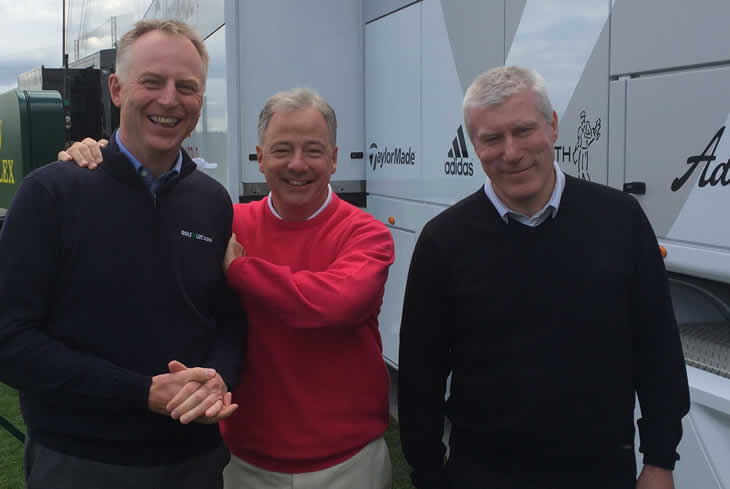
You’ve launched the R15 and the AeroBurner Woods this year. What sort of feedback have you been getting from the market and which of the two is doing better and why?
SEAN: The R15 driver has done fantastically well for us, both out on Tour and in the marketplace, surpassing the performance of the SLDR. The performance is definitely an improvement and the golf club is more forgiving. It still has low forward CG which leads to a high launch and very low spin, but now with the ability to split the weights it gives the opportunity to make it more forgiving which people have really liked.
On the AeroBurner side the fairway woods have really been the star of the show. A little bit lower, forward, CG combined with the Speed Pocket for more speed, and we’ve been able to take so much spin off the launch condition means that the distance has been great.
The R15 driver and the AeroBurner fairways have been our two stars.
It seems that the AeroBurner has been positioned as a 'grip it and rip it' club and the R15 for players who prefer to play with the technology, as opposed to traditional positioning of 'better player' and 'higher handicap' clubs. Has this positioning worked for you?
SEAN: It has and it isn’t a new thing for us as we’ve been doing that with clubs since 2007. The reason it works is that it’s really the way that golfers play and think. Out on Tour there are some players that are really into the details, into shaping shots, trying to find 200 rpm more spin, so they are very technical.
Other guys, like Retief Goosen for example, just want to hit it as far as they can so they are closer to the green, so they play golf in a different way and we try to design clubs that don’t just fit different players, but also fit their mindsets.
So the positioning is really more about a psychographic than it would be about a handicap or a demographic. We’ve done that for a long time and it has really resonated.
TaylorMade has almost become synonymous with white heads, but I see in these ranges you are offering white and black heads. Is there any particular reason for that?
BENOIT: We see the split in the market in the US being about 60/40 with white being 60% plus or minus 5%. We still have a lot of people buying our product who want to buy a white driver. They appreciate the alignment feature that it provides, the comfort of the larger visual head that the white provides and these are still big selling points.
Nevertheless there are players who just don’t want to play white, period, as a matter of choice and therefore what we did this year was say rather than making a single colour decision and preventing those people playing the product, let's offer both solutions.
That has been quite well received, especially as we introduced both products at the same time this year rather than previously where we have made a later introduction of the colour option, so right at the get go people can choose what they wanted.
The Tour is playing massively in favour of white drivers, but we see the 60/40 split in the general marketplace.
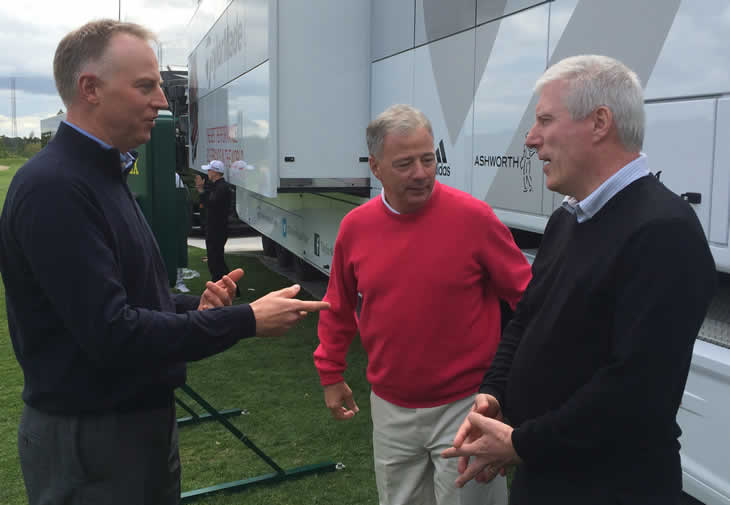
Do you encourage the choice of white on the Tour?
SEAN: We do, but it is interesting that almost all the Tour Players select a white driver anyway, purely because they prefer the way it looks. They like the way the black face is framed by the white crown, which aids alignment and it also lets you see the loft on the club a little bit more.
When Nick Faldo, who is quite attuned to the details as you probably know, comes in and we show him the things we are working on, he always gravitates immediately to the white head and you might think he would be one of the last players to change.
With the black AeroBurner it is all black without any contrast from the crown to the face and that is just something that golfers have asked for as a personal preference. We didn’t launch the black AeroBurner at the same time as we were only going to produce the white version, but we just had more and more people asking for it and that product is going to be for the US market only.
When we launched black and white in R15 we believed that sales were going to be 75-80% white compared to 20-25% black, but it has turned out to be in the 35%-40% range for Black so that has shown that some players prefer that so we want them to have that option.
I reviewed the AeroBurner Mini driver recently, which I thought was very good. Are you trying to create a niche between fairway woods and drivers and how big is it?
SEAN: We think the niche where players may use this is about 10% and we don’t think that will grow for a while. Players are trying to figure out what it is and how you use it.
For a good player it is a situational club. There may be lots of golf courses where you would play it and put it in the bag and there are other courses where it doesn’t make sense on that course.
For an average golfer we definitely see more mid to high handicappers using it as their primary driver, something that is a bit shorter and easier to control, which may even result in the average tee shots being longer with that club because they will hit it more consistently.
I don’t think it is ever going to be 20% of the driver market, but I think it is a solid niche in the market that the AeroBurner Mini does a great job of filling.
BENOIT: The sales we have are mainly around the 12° and 14° lofts so far and it looks like the better golfers have been giving this product a trial. It reminds me of when we introduced Rescue for the first time. It was the better golfers who were trying them out first and I would say the higher handicap players came later to that product. Today you could argue it is the opposite with the Rescues being used more by the higher handicappers with better golfers now looking at other products, long irons for example.
For me what is interesting is it is a new product and it is the better golfers who are giving it a trial and the average golfer is not yet trying it out. We don’t sell a lot of the 16° loft for example, which would be a perfect tee shot club for an average golfer compared to hitting a lot of 3 woods as it is much more forgiving from the tee. With the Rescue it took us 3 years from launch to gain traction across the whole spectrum of golfers.
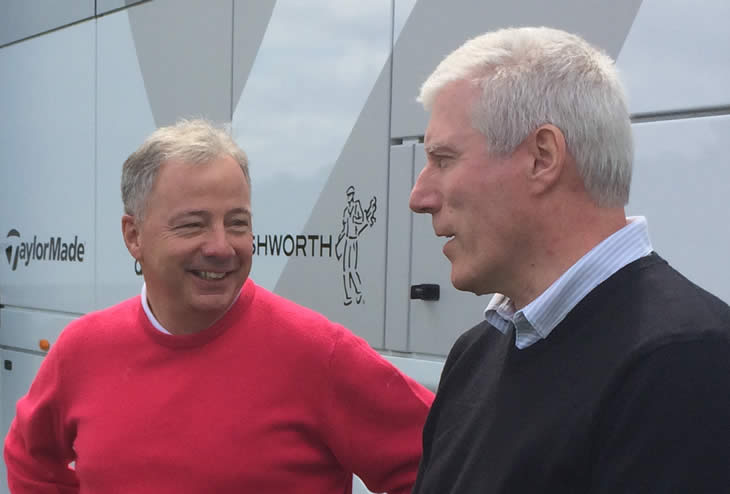
SEAN: I agree, but I don’t think this will ever be as big as the Rescue market because that literally obliterated what your set would look like, whereas the Mini is really an additional club. I think it is club that anybody who plays a lot should have as it offers that versatility and the golfer can then work out when it is best for them to use it.
BENOIT: If I use my crystal ball to speculate on the future, what I could imagine is you have an average golfer who would use his 16° mini driver as his 3-wood for the tee shot and then from the fairway he wouldn’t use a 3-wood, but more like a 5-wood because now with the low forward CG design we put in our fairway woods they get up in the air, but don’t have the spin level that a 5-wood used to have of 5000 rpm. Now it’s more like 3800-4000rpm so they go way longer and get in the air better so I think maybe there is that potential that the Mini replaces the 3-wood.
By your high standards, 2014 wasn’t the best year for TaylorMade, so how is 2015 going for you so far?
SEAN: 2015 is better. We are certainly more optimistic. The weather has been a lot nicer and there seems to be a general optimism towards golf. I don’t know if that holds true here in the UK, but in America there is definitely a sense that people are itching to play and I think participation is rising which is good. The marketplace is still not great, but it is getting cleaned up and we are looking forward to a better year for sure.
When you say cleaned up, do you mean economic circumstances will remove some competitors from the marketplace?
SEAN: Definitely. I think that golf’s economic circumstance is making it more difficult for smaller brands for sure and there are therefore three or four brands that seem to be separating from the pack a little bit and thankfully we are one of those, so that I think is good.
The marketplace that had old inventory, discounted product, things like that, is starting to get cleansed. Probably a couple of months away from really being clean in that respect, so I think that is great.
We have definitely seen more golfers are looking for the latest equipment, so the new offerings are doing better.
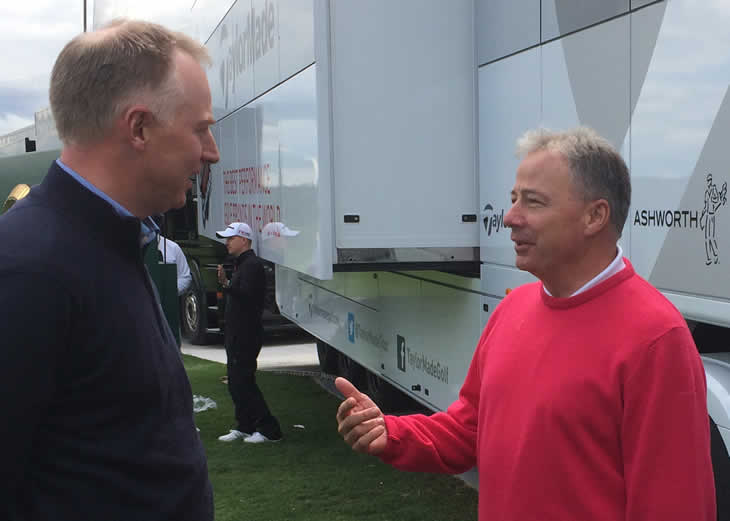
I presume the US is the biggest part of your market, so how much does Europe contribute?
SEAN: We do just under half or our business in the US and then Europe and Japan each do between 15-20%, with the remainder coming from the rest of the world outside of those areas.
We’ve seen a development in your Adams brand recently with the launch of Adams Blue range. This seems to be a change from it being seen as a Senior/Elite Tour player hybrid?
SEAN: The Adams brand is going to continue to be about high performing equipment, but the target is going to change a little bit. Golf is about aspiration. I’ve never met a golfer who doesn’t want to improve, be it Tour player or somebody who is new to the game, and hybrids are a big part of adding to the game and making it easier and more enjoyable to play.
So Adams is really going to focus on being a brand that has fun, that can make the game more enjoyable and can help you improve. You are going to see a lot of the things that we did with Adams Blue, where it has got a very simple message. It is very difficult to design a club for the average golfer that will see his success rate go a way up.
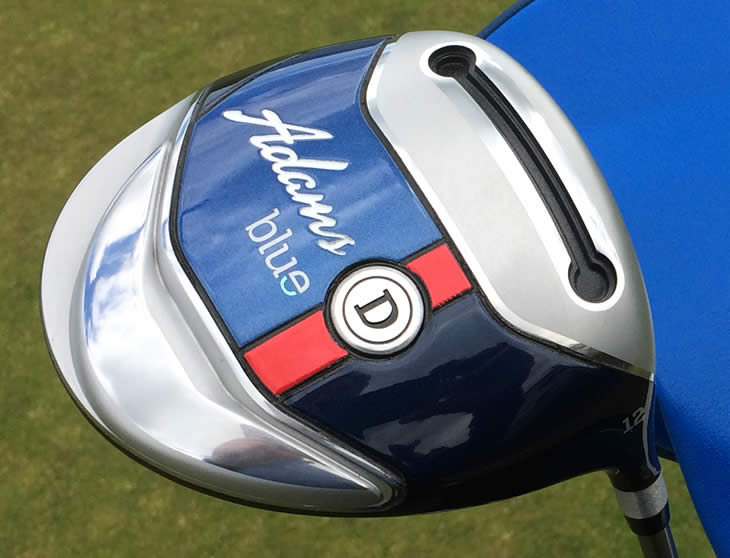
The Blue Driver for example with a slot in the front, with a CG that is a little further back than we have been putting it in TaylorMade clubs, and a much thinner tip shaft are all designed to help you get a better launch angle and dynamic loft on the club, but still give you the speed to achieve good distance.
These are really hard clubs to build and we felt it would be better for us to take the Adams brand in that direction rather than try to stretch TaylorMade so wide to cover it all.
With Adams though we are still going to have the Red line, such as the Adams Red Hybrid that is geared towards players with faster swing speeds. Blue is aimed towards more moderate swing speeds whereas the Red line is aimed at helping players with faster swing speeds hit better shots.
Game improvement, although I wouldn’t like to call it that, more making it easier for players with faster swing speeds to hit better shots.
Why are you not comfortable calling it game improvement?
SEAN: Well, I think there is a stigma with that, so you can call it game enjoyment or whatever you like, but it is really about helping the golfer hit better shots.
With the slot technology, was it something you had before you acquired Adams or was that one of the reasons for the deal?
SEAN : A lot of people have said that is why TaylorMade bought Adams, as they were infringing on an Adams patent but that is completely false.
BENOIT: We had our own intellectual patent so it is easy to look at the patent we filed around slot and the patent Adams had an in fact they are complementary. Ours covered one way of doing a slot and theirs covered another way of doing a slot so together they cover many ways to do a slot, but when we were designing our slot it was already built on our IP and had nothing to do what they were doing.
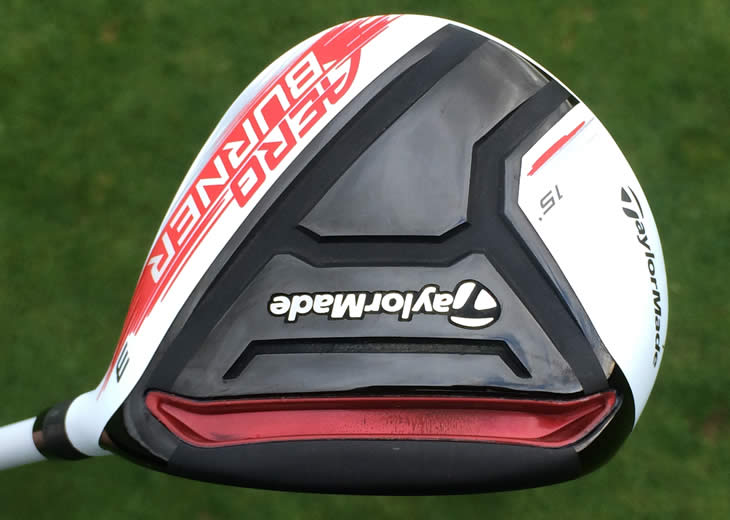
So we were working on our own slot in design a long way before we were considering buying Adams. I don’t think we would ever buy a company just for their intellectual property. At least not for that price!
So can you explain the differences between your slot and the Adams' slot?
BENOIT: Yes, it is all about the detail of the geometry of the slot, theirs was described in one way and ours was described in another way. So it is the small details. Like how far the wall of the slot is from the face, certain and depths and certain lengths and thing like that. The differences are all in the details of the geometry.
Don’t get me wrong, both are slots, but when you look into the detail of the geometry and the precise shape of the slots then you can easily see the difference. Also with our slot there was also a lot of detail concerning the position of weight in relation to the slot because we were looking at forward CG.
You also own the Yes! putter brand and I’ve often wondered why this hasn't yet become the TaylorMade putter brand like Scotty Cameron is for Titleist. Is this something you’ve considered?
SEAN: We have. The Yes! brand has done really well on the European Tour, but hasn’t really done that well outside of Europe so that for us then becomes an issue on how we assign resources.
It is important for us to continue to solidify our leading position in drivers with TaylorMade, to continue to grow the TaylorMade iron business as the best performance golf brand in the world, to get the Adams brand in a position where it can really thrive and we also have TaylorMade wedges and TaylorMade putters. So it gets to a point where you can only do so much and the Yes! brand hasn’t translated that well into the United States.
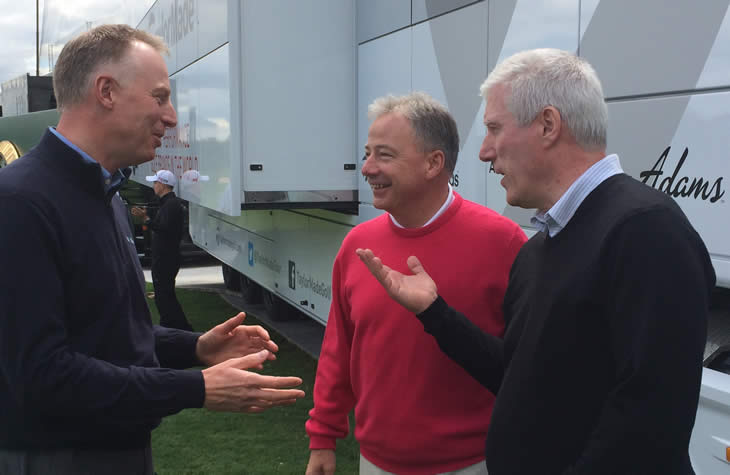
If you had one wish for the company or the market for the next year what would it be?
SEAN: My wish would just be for more sunshine and for people to rediscover why they love playing the game which is definitely starting to happen in the US where there is excitement about playing.
BENOIT: I think that what is missing this year what I would call the Product Of The Year. R15 has been nominated by Golf Digest as the best driver of the year, but even though that has been recognised by the industry and embraced on Tour, I don’t think we have any product this year that everybody talks about.
The products that are good, people mention them, but I don’t think there is a massive game changer like the RocketBallz.
SEAN: I think if there is one it would be the RSi 1 iron.
BENOIT: I agree that is a really unique story and something that was completely new to the market place.
What do you think was the last one – it doesn’t have to be your own!
BENOIT: In 2014 I don’t think there was one. I think before that it really was RocketBallz.
SEAN: I think with RocketBallz it was simply 17-20 yards longer for a fairway wood than previously, so that was clearly a game changer.
You mentioned there is more excitement about playing again in the US. Why do you think that is?
SEAN: I just think last year was so bad weather wise. Last year in June I went to play in a club tournament in the Mid-West where I grew up. Normally they would have been playing golf for at least two months and for most people that was only their third or fourth round of the year and the golf season took so long to get going that when it did people realised just how much they enjoyed playing.
BENOIT: I went to Canada at the end of April and heard that the weather had been so bad last year with the impact on the course and the greens they decided not to open the facilities for the entire 2014 season. This was true for 4 or 5 courses in that one area, so if you can imagine the impact of not playing golf for one year and then also the enthusiasm golfers will have for playing now they are able to again. So when we talk about bad weather it was a really bad season.
I also wonder if the new winners on Tour, we’ve seen some wins by younger players, contributes to people being re-energised towards the game. It’s suddenly become fun to watch the game again.
More From TaylorMade
More From Adams